
Niʻihau, anglicized as Niihau, is the westernmost main and seventh largest inhabited island in Hawaii. It is 17.5 miles (28.2 km) southwest of Kauaʻi across the Kaulakahi Channel. Its area is 69.5 square miles (180 km2). Several intermittent playa lakes provide wetland habitats for the Hawaiian coot, the Hawaiian stilt, and the Hawaiian duck. The island is designated as critical habitat for Brighamia insignis, an endemic and endangered species of Hawaiian lobelioid. The United States Census Bureau defines Niʻihau and the neighboring island and State Seabird Sanctuary of Lehua as Census Tract 410 of Kauai County, Hawaii. Its 2000 census population was 160, most of whom are native Hawaiians; its 2010 census population was 170. At the 2020 census, the population had fallen to 84.

Kamehameha I, also known as Kamehameha the Great, was the conqueror and first ruler of the Kingdom of Hawaii. The state of Hawaii gave a statue of him to the National Statuary Hall Collection in Washington, D.C., as one of two statues it is entitled to install there.
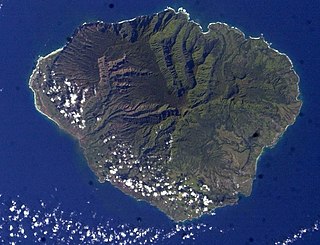
Kauaʻi, anglicized as Kauai, is one of the main Hawaiian Islands.
The history of Hawaii is the story of human settlements in the Hawaiian Islands beginning with their discovery and settlement by Polynesian people between 940 and 1200 AD.
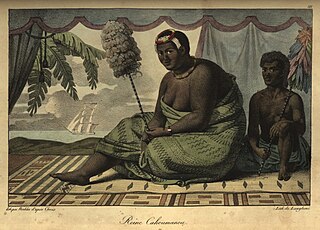
Kaʻahumanu was queen consort and acted as regent of the Kingdom of Hawaiʻi as Kuhina Nui. She was the favorite wife of King Kamehameha I and also the most politically powerful, and continued to wield considerable power as co-ruler in the kingdom during reigns of his first two successors.
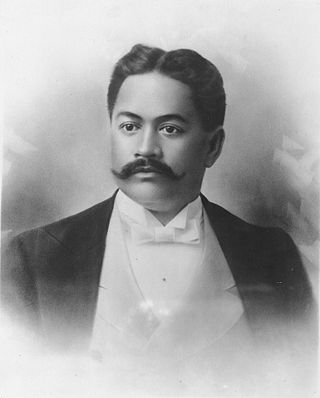
David Laʻamea Kahalepouli Kinoiki Kawānanakoa was a prince of the Hawaiian Kingdom and founder of the House of Kawānanakoa. Born into Hawaiian nobility, Kawānanakoa grew up the royal court of his uncle King Kalākaua and aunt Queen Kapiʻolani who adopted him and his brothers after the death of their parents. On multiple occasions, he and his brothers were considered as candidates for the line of succession to the Hawaiian throne after their cousin Princess Kaʻiulani but were never constitutionally proclaimed. He was sent to be educated abroad in the United States and the United Kingdom where he pioneered the sport of surfing. After his education abroad, he served as a political advisor to Kalākaua's successor, Queen Liliʻuokalani until the overthrow of the Hawaiian Kingdom in 1893. After Hawaii's annexation to the United States, he co-founded the Democratic Party of Hawaii.

Kaumualiʻi was the last independent aliʻi nui of Kauaʻi and Niʻihau before becoming a vassal of Kamehameha I within the unified Kingdom of Hawaiʻi in 1810. He was the 23rd high chief of Kauaʻi and reigned from 1794 to 1810.
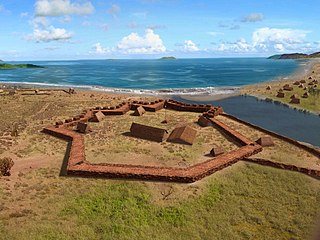
Pā'ula'ula State Historical Park is a National Historic Landmark and is administered as the Pā'ula'ula State Historical Park just southeast of present-day Waimea on the island of Kauaʻi in Hawaiʻi. It is the last remaining Native Hawaiian fort on the Hawaiian islands, built in the early 19th century by natives with an Italian-based design provided by a German traveler who arrived on a Russian-American Company ship, as a project of High Chief Kaumualiʻi. The star fort was employed by the Kingdom of Hawaii in the 19th century under the name Fort Hipo.
The aliʻi nui of Kauaʻi was the sovereign ruler of the islands of Kauaʻi and Niʻihau.
Isaac Davis was a Welsh advisor to Kamehameha I, who recruited him to help conquer the other kingdoms in Hawaii, resulting in formation of the Kingdom of Hawaii. He arrived in Hawaii in 1790 as the sole survivor of the massacre of the crew of Fair American. Davis and John Young became friends and advisors to Kamehameha. Davis brought western military knowledge to Hawaii and played a prominent role during Hawaii's first contacts with the European powers. He spent the rest of his life in Hawaiʻi and was known as ʻAikake.
The Governor of Kauaʻi was the royal governor or viceroy of the island of Kauaʻi and island of Niʻihau during the Kingdom of Hawaii. The governor was usually a male Hawaiian chief or prince, but several women also held the office. The governor had authority over the islands of Kauaʻi and Niʻihau, and it was up to the governor to appoint lieutenant governors to assist them. The governor had replaced the old alii aimokus of the islands, but the sovereignty remained with the king. The first governor was the last king of Kaumualiʻi, and it was not until his death in 1824 that Queen Kaʻahumanu and King Kamehameha II took control from his sons. The island governors were under the jurisdiction of the Ministers of the Interiors.
Kinoiki Kekaulike I was a Princess of the island of Kauaʻi during the transition from ancient Hawaii to the Kingdom of Hawaii.

Kamakahelei, was the 22nd aliʻi nui, or High Chiefess regnant, of the island of Kauaʻi. She was the ruling chiefess of Kauaʻi from 1770 - 1794. In some historical references she has been described as a regent for her sons Keawe and Kaumualiʻi. She was the sovereign of the island of Kauaʻi at the time Captain James Cook landed on its shores. The Chiefess Kamakahelei Middle School in the district of Puhi is named after her. This school serves the Kalaheo to Hanamaulu districts on the island of Kauaʻi.
Elizabeth Peke Davis (1803–1860) was a Hawaiian Kingdom high chiefess, being the hapa haole daughter of Isaac Davis, the Welsh advisor of Kamehameha I, who helped him unify the island in 1810. She was the wife of George Prince Kaumualiʻi, also known as Humehume.
Harriet Kawahinekipi Kaumualiʻi was a Hawaiian noble during the Kingdom of Hawaii. She was a high chiefess as the granddaughter of Isaac Davis Aikake, the royal advisor to King Kamehameha I.

The Hawaiian Kingdom, also known as the Kingdom of Hawaiʻi, was an archipelagic country consisting of the Hawaiian Islands in the Pacific Ocean that existed from 1795 to 1893. It was established during the late 18th century when Kamehameha I, then Aliʻi nui of Hawaii, conquered the islands of Oʻahu, Maui, Molokaʻi, and Lānaʻi, and unified them under one government. In 1810, the Hawaiian Islands were fully unified when the islands of Kauaʻi and Niʻihau voluntarily joined the Hawaiian Kingdom. Two major dynastic families ruled the kingdom, the House of Kamehameha and the House of Kalākaua.
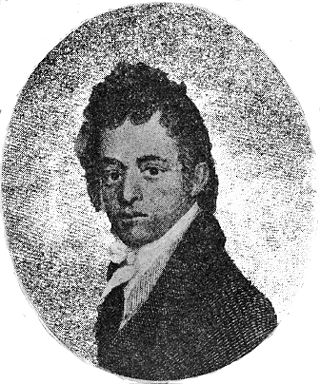
Humehume, known by many different names during his time, such as George Prince, George Prince Kaumualiʻi, Tamoree or Kumoree by American writers, was a son of the king of part of the Hawaiian Islands. He traveled widely, served in the U.S. military, and led a failed rebellion on the island of Kauaʻi.

Aaron Kealiʻiahonui (1800–1849) was member of the nobility of the Kingdom of Kauaʻi and the Kingdom of Hawaii. He is often called Keliʻiahonui, a contraction of Kealiʻiahonui. His name was given to him by his father Kaumualiʻi in honor of King Kamehameha I's peaceful takeover of Kauai and means the "king whose strength is attained through patience".

George Norton Wilcox was a businessman and politician in the Kingdom of Hawaii and Territory of Hawaii.
Deborah Kapule Kekaihaʻakūlou was the last Queen of Kauaʻi before the establishment of the Kingdom of Hawaiʻi by King Kamehameha I.











